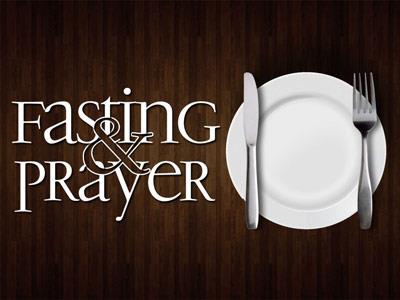-
Lord's Prayer Choices--Part 1 Series
Contributed by Roger Thomas on Nov 28, 2017 (message contributor)
Summary: Each line of the Lord’s Prayer confronts us with a spiritual choice about prayer and about life.
The Lord’s Prayer Choices
Matthew 6:9-13
Dr. Roger W. Thomas, Preaching Minister
First Christian Church, Vandalia, MO
“Our Father who art in heaven, hallowed be thy name. Thy kingdom come. Thy will be done on earth as it is in heaven. Give us this day our daily bread. Forgive us our debts as we forgive our debtors. Lead us not into temptation but deliver us from evil. For thine is the kingdom, and power, and the glory forever. Amen.” (Matt. 6:9-13)
Next to John 3:16 and the 23rd Psalm, the Lord’s Prayer is probably known by more people than any other passage of scripture. Many churches recite it every Lord’s Day as a part of normal Christian worship or liturgy. For some the “Our Father” is a secret ritual or magic saying designed to guarantee heaven’s attention. Clearly that is not Jesus intent. The context alone would clue us into that. Listen to the two preceding verses: (Mat 6:7-8 NIV) And when you pray, do not keep on babbling like pagans, for they think they will be heard because of their many words. Do not be like them, for your Father knows what you need before you ask him.
Some become rather contentious arguing that this isn’t the Lord’s Pray, saying that the real Lord’s Prayer is found in John 17, the long “high priestly” prayer of Jesus spoken on the night before the cross. All of that seems to me to be beside the point. If this isn’t the Lord’s Prayer, whose is it? Of course, this is a prayer taught by Jesus. It was intended as a basic teaching or primer on what prayer is all about. Jesus assumed that real praying is not necessarily a natural thing for we humans. We need to be taught what it is all about. If we aren’t taught right, we tend to drift into all sorts of distortions and perversions of real praying.
Historically, some have contended, with good reason, that this is the Prayer to End All Prayers. Augustine (4th century AD) wrote, “ Run through all the words of the holy prayers, and I do not think you will find anything in them that is not contained and included in the Lord’s Prayer.” St. Thomas Aquinas (13th century AD) called it “the most perfect of all prayers.” Tertullian (2nd century AD) called it the “summary of the whole gospel.” Apparently among some of the earliest Christians, it was customary to repeat the Lord’s Prayer three times a day (Didache, 8, 3; 2nd century AD). St. John Chrysotrom (4th century AD), one of the great preachers of the early church notes that the Lord’s Prayer is rightly used in corporate prayer because Jesus did not “say “my” father who is in heaven, but “our” Father.”
The Lord’s Prayer is part of the Sermon on the Mount, the most foundational extended teachings that Jesus gave his disciples. As such, it is at the root of the Christian life. In fact, rightly understood, the Lord’s Prayer is not so much about a formula for prayer or a particular ritual for worship, as it is about a way of looking at the Christian life. It is this concept that I want to explore over the next several weeks. Beginning tonight, we will examine the Lord’s Prayer in ever growing detail. We will look for lessons about prayer and more importantly about a praying lifestyle. Tonight I want to begin with a very brief survey of the prayer.
Phrase by phrase, the Lord’s Prayer outlines the values and priorities that make possible the Christian lifestyle. I want to review each significant phrase and leave you with a word to summarize and remember each key phrase of the Lord’s Prayer. I will do that by presenting a contrast or in another sense a choice/a way of looking at prayer that impacts our life. Each part of the prayer confronts us with a fundamental issue of life and forces a choice. How will we look at life? How will we decide to live our prayer?
Think of the Continental Divide in the Rockies. Driving through the mountains of Colorado or Wyoming, you frequently come across markers noting the location of the Divide. Theoretically, at least, that point marks a place where the watershed divides. Water falling to the east of the line, flows toward the Missouri and the Mississippi and finally into the Gulf of Mexico and on toward the Atlantic. A drop of water landing west of the line, flows toward the Yellowstone, or the Colorado, or the Columbia and on into the Pacific at some point. At the beginning, theoretically, two drops of water might have landed inches a part, but the divide resulted in destinies separated by thousands of miles.
Likewise each little line of this prayer presents us with a spiritual divide. Depending on which side of the line we fall, eternal destinies are at stake. Only here, unlike the drops of water, we can have an impact on where we come down.

 Sermon Central
Sermon Central



